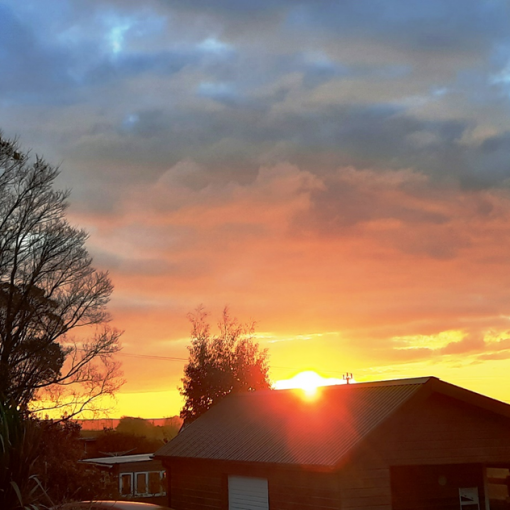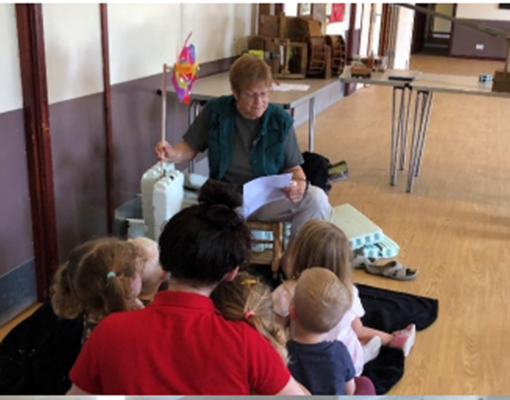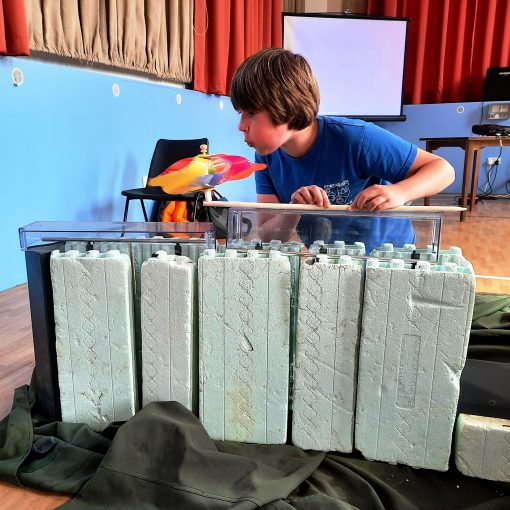23rd SEPTEMBER 2022 – WEEK 40 A long one, but packed full of good stuff due to 3 amazing guest contributors.
Season of mists + an analysis of small-scale wind energy and list of future events



The weather has been kind. I can only imagine all those thousands of people queuing in London and then at the Queen’s funeral, saying ‘what a relief!’ Calm, peaceful and actually very beautiful are these days of mists and mellow fruitfulness and I am sure we are all thankful for it.
The blackberries (in the tray above) needed rain and more time to ripen, but now are coming good, along with so many big fat apples donated by friends. Crumble, pies, jams etc. YUM!
The 3rd picture above is hundreds of cuttings that I trimmed from my hedge. Put into bags with potting compost and water, then delivered to Par Bay Community Garden so they can establish a new hedge around their recently acquired waste-land area. This was only about 1/3 of the eventual amount I can give, so anyone close by who would like more, just send me a message.
Wind energy for your home or business
Growing up as a child here at Penpell Farm, at first I gave very little thought to the fact that our water was pumped from quite far away, by an old-fashioned looking wind pump. But then it became a regular part of adventures with my sisters, to play dare-devil games climbing this rickety old structure. Much later it also became the focus of many nightmares, contamination of water by the cattle around, failure of the electric supply (which eventually replaced the wind action) and general worry about a system that was over the hill and far away from the house.



Many years later, as old barns were renovated, new water sources were installed. Some houses ended up with mains water, but others sank bore-holes and pumped using mains electricity.
Fast forward once more and we arrive at the farmer commencing action this week, putting in electric and water for a new bungalow. He owns the old pump and would really like to restore the system, but it seems the cost of new copper cable to the pump house, plus new pump, servicing the old water rings and replacing whatever else may be needed will be too high.


A new bore hole will cost a lot less. Nevertheless, together we are exploring potential for pumping the old water with wind, to serve tanks for cattle. This has led me to connect with really fascinating new web sites and experts.
First a short section from http://www.historyofwindmills.com/windmill-history/windmill-water-pump/ I am unsure where the writer is located, the command of English being slightly suspect, but it still seems useful as an introduction.

The text above about wind pumps for water on the other side of the world reminded me that our colleague, Rupert at Evans Engineering, has a lifetime of skill and experience in this field.

I very much like the ideas for community involvement here. We believe our wind pump activated something very like the ‘Hydraulic Ram’ mechanism he talks about, but I am out of time and space to question Rupert about it and report his knowledge here. Hope to have room in future.
Domestic wind turbines
Well before this farm development, my mind was mulling over any additional options for sustainable energy that I might be able to install at The Meadow Barns. I had in the very back of my mind a small wind turbine that was on sale from IKEA, about 10 years ago, for about £1,200. I hunted high and low on the internet, but that product has disappeared without trace.
I contacted one of the UK’s best expert firms in this field, FuturEnergy, and owe a huge thank you to their spokesman, Doug, for providing tons of useful information. He started with: –
I think this was sold by B&Q and it was called ‘WindSave’; if you remember David Cameron had one on is London home.
I hunted and found a totally hilarious newspaper report – 29th March 2007, David Cameron has been forced to remove the wind turbine from his West London home because it was put up in the wrong place. Planning permission had been granted for the turbine to be attached to the main chimney of the Conservative leader’s North Kensington home, but the structure ended up being attached on the wrong side of the chimney from that specified in the application.
Cameron’s decision to install a wind turbine has come to be a symbol for his dedication to environmental issues. It is not known whether the removal of the device will mean a corresponding dip in the opinion polls!!
And another dated 13th April 2012 – The architect behind the eco-friendly makeover of David Cameron’s house has admitted the wind turbine being attached to the Tory leader’s roof is not as effective as was hoped. Alex Michaelis is masterminding the £600,000 revamp of the £1.1 million four-bedroom Edwardian terrace house in North Kensington where Mr Cameron lives with his wife Samantha and their three children. Michaelis has now admitted their failings and Mr Cameron, who spent thousands on his model, may have to invest in a new one as early as next year.
Doug’s comments continue: –
It failed because zero site assessment ever took place and they were installed on roofs in towns and cities which, as Futurenergy have always said, simply will not work. As a result, this company did a lot of damage to the micro wind turbine concept.
Futurenergy’s most valuable skill and service is in assessing feasibility. Visit their free PDF online and you will find a huge amount of information – https://futurenergy.co.uk/wp-content/uploads/2022/01/Site-asssessment-AF1-turbine-guide-220104-1.pdf
Their analysis of turbulence around a site is so well written and illustrated that anyone can grasp the basics. Unfortunately, it immediately gave me a sense that even a site so frequently blasted by Southwest gales as the Meadow Barns may not be great for a turbine location.

My next step was to consult that most respected and helpful academic, Richard Cochrane – Associate Professor of Renewable Energy at the University of Exeter, Penryn.
I wrote ‘I am thinking to buy a small domestic wind turbine for this site, I am approaching various wind turbine designers/ suppliers – from the architects who proposed in-roof turbines on an eco- town for Damien Hirst in N Devon, to a company called FuturEnergy who seem really solid, reliable and have a fantastic guide to assessing one’s viability site-wise. Their structure is built on a frame of scaffold poles. Not sure if one has to have planning permission for it?
Doug answered this question later:- Our Future Energy Airforce1 turbine is within permitted development dimensions so should not require permission although there are regulations regarding positioning with regards to other people’s property. Because we manufacture in the UK (Stratford upon Avon) we can provide excellent support and service for such matters, if required.
My email to Richard continued;- But the dodgy thing is that many small turbines come from China, with no reliable data and no contact you can question. I feel we need a clear, accurate short overview kind of study of things like the one I have attached, compared with the horizontal type on a pole, like an aeroplane nose. And any other options.
EQEEN 10000W AC Vertical Axis Wind Turbine Generator Kit, Permanent Magnet Lantern Motor Kit with Controller for Home Or Camping. £500 on Amazon. No indication of how much power will be generated!


Richard’s response carried on – ‘Small wind is an interesting area. At present I’m afraid that the small turbines available are a bit of a compromise. They aren’t great in high winds as they regulate power by stalling the blades. This makes them relatively noisy for their power output. Larger machines pitch the blades the other way, which is much quieter and also reduces the load on the tower.
If your STEM knowledge is at a similar level to mine, you may be glad that Doug has come to the rescue with some additional information here too: –

The above chart shows how efficient different designs of turbine are. As you can see the 3 bladed rotor is the best and can convert almost 50% of the energy in the wind to mechanical rotation. The Savonius rotor design such as the Lantern turbine can only convert 15% of the wind energy, this is a big difference. Vertical turbines need to be much bigger constructions – the 3 bladed design is the best use of materials so efficiency in the manufacture is a major factor.
BACK TO RICHARD COCHRANE
For applications like a road sign, which is near a noisy road, small turbines can be very effective but now I would think you’d get a better return on the investment in small wind by investing in big wind or community schemes like Ripple rather than small turbines at home.
I’ve had a few ideas about making small turbines that pitch like the big ones do and I got some students to do some good analysis on this for a project, but I haven’t had time to move this further forward yet.
The turbine you showed an image of is an interesting concept but unfortunately not very efficient for the size of the device. It works by drag forces rather than lift forces and this means you need a strong tower and relatively large foundation for the power produced. I’d also be worried that the sheet used to make the device would not last very long in the wind.
Again I felt the need for more explanation here and this time my colleague David came to the rescue, talking me through, using aeroplane wings as a comparison:-

I thanked Richard very much for his input and I continued my research, moving on to a far greater scale of project, the Damien Hirst idea of wind turbines within the roof ridges of a 500 home eco-town near Ilfracombe. To my great surprise it turned out that Doug was actually the person engaged to make the prototypes of this system, by The Power Collective in Canada, who patented the so-called Ridgeblade idea. Before I tell you his side of things, let me explain a bit more history of the project.
Damien Hirst used a company of architects called Rundell Associates to prepare and submit designs. I am really grateful that their director, Mike Rundell has taken time to fill in the story for me.
The first plans were approved in 2014, but Hirst suddenly dropped the scheme in 2018. It has been picked up by a more local firm, in Exeter, but of course without all of the interesting green features that had originally been included: – The proposed homes will include renewable energy solutions such as concealed wind turbines in their roofs and photovoltaic solar panels.

I asked Mike Rundell, how was your company formed? It was in 1997 when I was asked to design a restaurant with Damien Hirst – at that time the company both designed and built projects, but from 1998 the building side of the operation was closed and we became a purely design company. It was hard to carry out both roles effectively and I was more interested in design than construction.
Were the original aims as now e.g. a balance of top quality design with sustainability? Yes – the company was one of the first Carbon Neutral companies and was registered with a carbon offsetting company called Future Forests in 1997. We installed systems to limit wastage of water etc etc, but primarily we were – and remain – driven by aesthetics rather than sustainability. However, I think it’s mainly a question of design skills to allow both to co-exist seamlessly.
Do you feel that the majority of clients have that balance in mind, between high end finishes, interiors etc and sustainability? If not, what might the average percentage priority be for each? Are you trying to move them closer to the sustainable, even if it requires some sacrifices? We are (perhaps inevitably) more involved/concerned with sustainability issues than our clients, as we don’t have to pay the premium involved – and there is always a premium whether it comes in the form of cash, reduced internal space (due to higher amounts of insulation), reduced sightlines due to heavier glazing bars or the like.
You say there is a strong connection with Cornwall. Why is that? My Father, Grandfather, Great Grandfather etc … were all born and bred in Cornwall and to my personal knowledge my Great Grandfather and Grandfather were both builders in the county. I was born in London but went to school in Cornwall for a time and our family home has always been there.
Looking at your special expertise in building on steep cliffs (Cornwall N Coast), can you say whether something lower in the landscape, more on the lines of a traditional Earthship, would be possible? (I don’t like the very striking high-level glass on a wild cliff ☹) OR are the costs and engineering challenges too great, carving into those big rocks?


The costs of excavation are indeed very high and the energy expended to “carve rocks” would also be significant unless the rock that was quarried could later be used for construction purposes. Our most recent building is set back into the cliff face and we have brought the grassy bank back over the roof to help it blend in.
In such a windy environment, can the turbulence and other challenges be solved for installing domestic wind as well as solar/PV?
I have always liked the idea of a wind/PV mix on a site and I much prefer the idea of long low turbines than those stuck on top of a huge pole, as they seem too detrimental to the appearance of a site. I totally agree! We have stayed interested in the technology for turbines in the ridge – this company (based in Canada) seems the most advanced at present. https://thepowercollective.ca

It was after this discussion that Doug told me about the Ridgeblade work they had done in the past, making 10 prototypes. But now the momentum seems to have stalled and he doesn’t own the Intellectual Property rights, which is why he is now involved in offering a different kind of package, in conjunction with a firm called Voltacon, to give a complete system with batteries. https://voltaconsolar.com/wind-solar-5kw-off-grid.html
In this set-up the wind turbine is not designed to be an independent generator, rather it is a supplement to the solar PV, both feeding into batteries. Each battery has its own ‘discharge rate’ – some operate at 50%, others can be up to 90% and this must be taken into account in putting the system together. The end-result is suitable to enable a canal boat or caravan to run lights and some personal devices off-grid.

Thank you to all the above for their contributions!
LAST SECTION A few dates for your diary: –
Cambridge – 12th September to 18th October
https://cambridgecarbonfootprint.org/open-eco-homes-events/
Chacewater Village Hall – Saturday 24th September Free Energy Saving Advice Day
Cambridge – University October 14th – 16th https://climatechangefestival.zero.cam.ac.uk
Zero Climate Change Festival 2022
Cornwall, Meadow Barns – Tuesday October 25th Free open day, with 3 guest artists from Par
All based on 3 Little Pigs story, updated. Drawing, making, writing and a final drama workshop.




